Anna Karenina
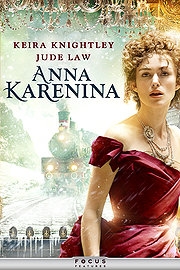
Last year we had Andrea Arnold’s thoughtful, über-naturalistic adaptation of Wuthering Heights; this year the big game-changing period drama is Joe Wright’s richly theatrical Anna Karenina. Where Arnold chose to strip back the grandeur, Wright charges full speed in the opposite direction, constructing a story which – in a clear nod to the decline of the decadent Russian Empire of the late 1800s – plays out within the confines of a dilapidated theatre. Crammed full of beautiful dresses, extravagant sets and enough tragedy to make Sophocles weep, Anna Karenina is certainly a spectacle, but perhaps not one that will stay with you for long.
Anna (Knightley) is a beautiful young aristocrat who is contentedly, if not quite happily, married to senior statesman Count Karenin (Law). Following the infidelity of her brother Stiva (Matthew Macfadyen) Anna departs her home in St. Petersburg, leaving husband and young son behind, to visit Moscow and help repair Stiva’s marriage to his wife Dolly (Kelly Macdonald). Whilst in Moscow, Anna encounters the dashing young cavalry officer Count Vronksy (Taylor-Johnson). Immediately taken with one another (and after a spot of sexy “no we mustn’t!”-ing) Anna and Vronsky enter into an affair. Their relationship promptly becomes public knowledge and the rest of the story charts Anna’s fall from grace following her self-destructive inability to stay away from Vronsky. Running alongside this central arc is the story of young idealist landowner Levin (Gleeson), and his search for love with Dolly’s sister Kitty (Alicia Vikander).
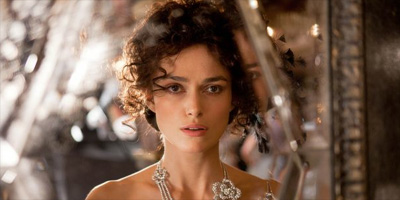
With the decision to base the action of the story inside an old theatre, Wright plays upon the pretence of nineteenth century aristocratic society and its emphasis on appearance. In this world, Anna – constantly praised for her physical beauty and grace – is the big star of the show; the lead actress in the grand drama playing out around her. And Wright takes every opportunity to remind us of this, placing her within the physical confines of a theatre and often literally putting her in the spotlight. Anna’s leading man is the handsome Vronsky and together they closely resemble a modern-day celebrity couple, avidly observed by their adoring, gossip-hungry public.
One of the pivotal moments, indeed, revolves around Anna and Vronsky’s first dance, a complex waltz which sees them weaving seamlessly through the crowd. As illustrated by their negotiation of the dance floor, they are highly skilled navigators of this world. But they are also, crucially, victims of it. Their love, deemed unacceptable by society, makes the couple – and in particular Anna – martyrs to the cause. All of which can be grasped from the way in which they are constantly observed and treated by their peers. It’s this richly woven world, built upon appearances and strict adherence to the social conventions, that makes this film such a spectacle.
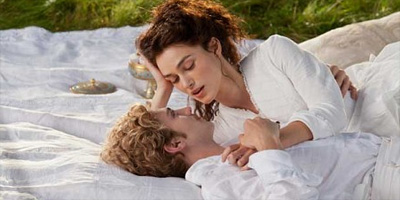
As Anna, Knightley seems to have grown into her looks, shedding the gawkiness of past roles. Here her strikingly sharp, almost gaunt bone structure fits the haunted, perpetually troubled Anna perfectly. And her portrayal of Anna’s gradual demise, both mentally and socially, is note perfect. Taylor-Johnson’s performance similarly stands out. Capturing an air of youthful arrogance but ultimately sympathetic, his blonde-haired, swaggering, emotional Vronsky is the perfect counterpoint to both Knightley’s ferocious Anna and Jude Law’s rigid Karenin. Against these two, however, the drippy romance between Gleeson’s Levin and Vikander’s Kitty just doesn’t stand up.
And somehow, for all the grandeur and richness, there’s something a little shallow about Wright’s film. The problem is that it’s difficult to ever feel truly ushered into Anna’s world when it is crafted so deliberately to be a falsehood, built upon artifice and pretence. Thus are the most emotionally involving moments those naturalistic scenes in which we depart from the confines of the theatre momentarily to visit Anna in her sickbed, tended by both her lover Vronsky and her husband Karenin (the relationship between these two men being perhaps the most interesting in the film).
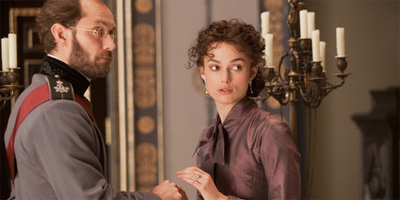
Ultimately, Wright’s film is a brave, ambitious undertaking which both gains and loses something in the departure from the norm. As with his last venture, fairy tale thriller Hanna, Anna Karenina deftly dispenses with the familiar tropes in an attempt to buck the trend. But while Wright’s film is a breathtakingly choreographed treat for the eyes, it doesn’t go much deeper than that.


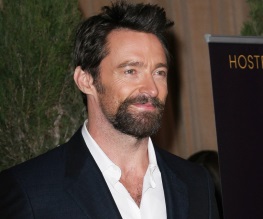
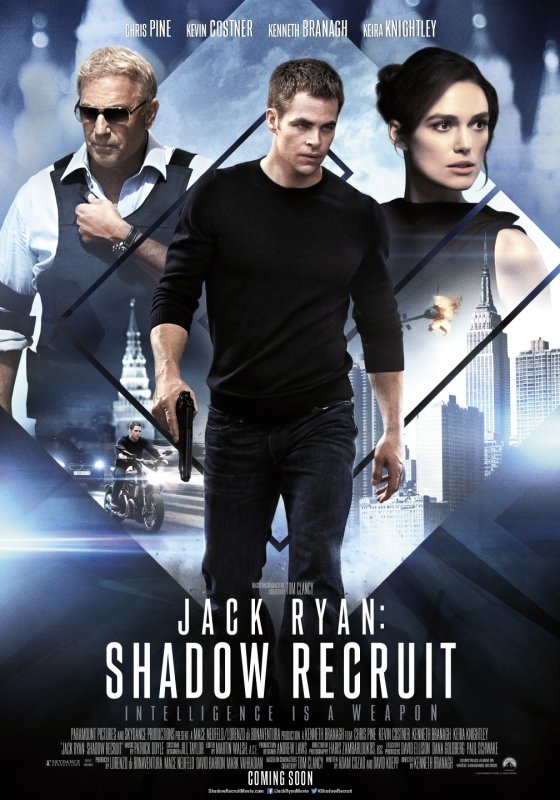
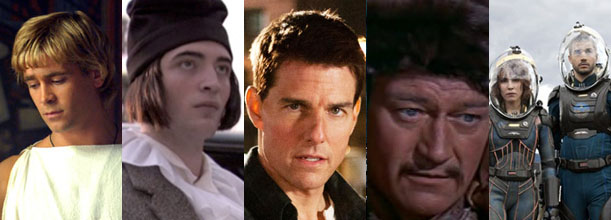
Recent Comments